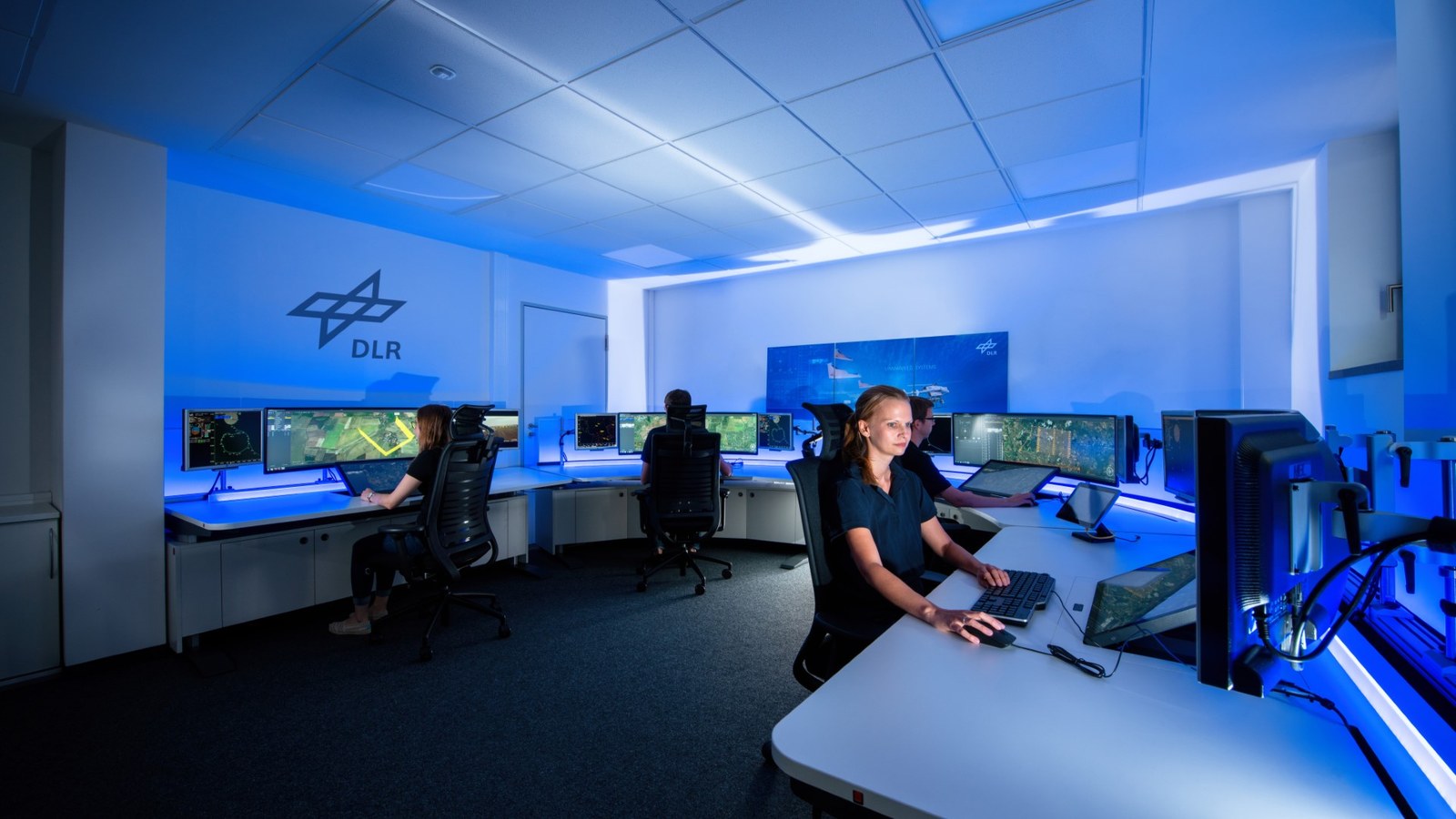UAS Lab

For several years, the Unmanned Aircraft Systems department of the Institute of Flight Guidance has been researching concepts and technologies which will enable the integration of Unmanned Aircraft Systems (UAS) into controlled and uncontrolled airspace. Air taxis, vertiports, flights in urban areas and U-space are important topics that are addressed and supported by the Institute’s research facility “UAS Lab“ and the generic UAS ground control station U-FLY.
New procedures and technologies for UAS are regularly tested and evaluated in collaboration with experienced end-users. Initially, this is carried out in the secure simulation environment of the UAS Lab, integrated into DLR’s Air Traffic Validation Center. In a further step, flight tests with research aircraft (including the Dornier Do 228 UAS demonstrator and several small drones) and the U-FLY ground control station can be carried out subsequently or additionally, e.g. at the National Experimental Test Center for Unmanned Aircraft Systems at the airport of Magdeburg-Cochstedt.
UAS Ground Control Station U-FLY
DLR’s UAS ground control station U-FLY is capable of creating four-dimensional trajectories. Flight paths and the aircraft status can be monitored with regard to a multitude of aspects, such as safety (e.g. heights, obstacles and restricted areas), efficiency (e.g. shortest route, temporal restrictions) or mission objectives (e.g. coverage of aerial photographs). U-FLY also enables swarm management through the possibility of monitoring several UAS simultaneously. Interfaces and functionalities of a future U-space system support future UAS applications.
Beyond the UAS Lab, the UAS ground control station software U-FLY is also installed on an ergonomically optimised workstation and operator chair that is used in various applications for remote guidance, control and monitoring of manned and unmanned aircraft. This operator chair has three 24'' monitors and a connected simulation computer running the required simulation environment. The operator chair is used to address a range of research questions, such as the development of intuitive display concepts for the remote guidance of various airspace participants, the identification of the data required for UAS control, and the interface and process development for coordination with air traffic control.
